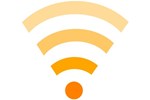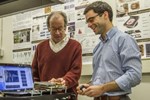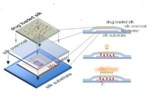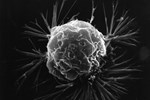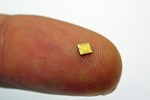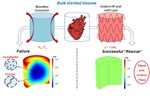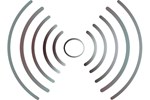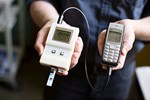ARTICLES BY CHUCK SEEGERT
-
Is Wi-Fi More Dangerous Than We Think?1/16/2015
A little known fact about the electronic devices we use is that the radio frequency electromagnetic fields they generate are classified as Class 2B Carcinogens by the World Health Organization. New analysis by researchers contends that children are particularly susceptible to this type of radiation.
-
Google Lobbies For 3.5 GHz Band To Provide Cheaper Wireless1/10/2015
With the intent of making alternative wireless services available, Google is lobbying the Federal Communications Commission (FCC) to open up the mostly vacant 3.5 GHz spectrum. Vast amounts of low-cost bandwidth could be available at a price that would undercut services from larger carriers. As prices for access to traditional wireless spectrums continue to soar, this alternative could be a boon for consumers.
-
Microwave Imaging System Could Improve Breast Cancer Screening12/18/2014
As a possible complement to routine mammography, a new microwave imaging system may be able to detect whether a lump is benign or malignant. The system provides 3D reconstructions of tissue, which are obtained without compressing the breast.
-
Will Radio Telescopes Deliver The Image Of The Century?12/15/2014
An unprecedented worldwide collaboration has brought together a global network of radio telescopes to achieve an incredible level of image resolution. The objective of this effort is to image for the first time what some deem to be the most exotic object in the universe — a black hole’s event horizon.
-
Wireless Brain Sensor Could Pave Way For Improved Neuroprosthetics12/11/2014
A wireless system for brain studies now enables the remote acquisition of high-fidelity neural data from animal models. Previously, wires and cables constrained these types of experiments to artificial scenarios. With the new system, neural data can be obtained during normal, unrehearsed activities.
-
Wireless, Dissolvable Medical Devices Deliver Therapy On-Demand12/5/2014
To fight bacterial infection, researchers have developed an implant that can deliver either antibiotics or thermal therapy. After triggering the implant via a WiFi-like connection, the device will deliver treatment and dissolve, eliminating the need for a secondary surgery.
-
Should Television Airwaves Provide Free WiFi?12/2/2014
As television usage shrinks, some researchers suggest turning the bandwidths traditionally used for television into common property for a free public WiFi service. Broadcasting over long distances and through walls could have far-reaching consequences and a positive economic impact.
-
Enabling The Next Generation Of Terahertz Devices11/25/2014
A newly developed, single-component terahertz source was recently developed by researchers at Northwestern University. The device covers the full spectrum of terahertz radiation, comes in a small package, and is capable of functioning at room temperature. The device may enable new medical diagnostics and improve security measures at airports.
-
Attacking Tumors With Miniaturized, High-Frequency Antennas11/13/2014
A team at the University of Wisconsin has figured out a way to miniaturize tumor ablation antennas by delving deep into microwave physics. These smaller scale antennas could provide surgeons with treatment options previously unavailable.
-
Wirelessly Monitoring Biomarkers For Improved Healthcare11/7/2014
Combine nanoscale blood testing with wearable tech for non-invasive monitoring, and you have the basis for a new home lab system. Patients at high risk for certain diseases may now have new options for real-time monitoring with a variety of capabilities.
-
FCC Delays Airwaves Auction For Wireless Carriers To 201610/28/2014
Some of the most attractive frequencies traditionally used for television have been slated by the Federal Communications Commission (FCC) for auction to wireless companies. The complexity of the initiative has led to delays in the sale of what some call the “beach front property” of the radio frequency spectrum.
-
RF-Heated Magnetic Nanoparticles Could Improve Organ Cryopreservation10/28/2014
Cryopreserving organs and masses of tissue has improved significantly, but the thawing of these organs has not. Now an approach using radio frequency (RF) and magnetic nanoparticles (mNPs) may allow uniform thawing that avoids the damage seen with heating before.
-
Google To Experiment In Millimeter Wave Technology10/23/2014
In what may be an attempt to add to their high-speed fiber offerings, Google has requested FCC permission to test in the millimeter wave frequency range. These rarely used frequencies are capable of transmitting large amounts of data and may be the next step for wireless connectivity.
-
Could RFID Tech Improve Breast Cancer Surgery?10/16/2014
University of Wisconsin researchers are currently working on using implantable radio frequency identification (RFID) chips to guide surgeons to a tumor’s location. They believe that the technology has the potential to replace painful and less accurate wire localization methods.
-
Handheld Device Promises To Deliver Inexpensive Diagnostics To Developing World8/7/2014
When most people go to the hospital, the laboratory analysis of various tests is taken for granted. In many developing countries, however, this is not the case, and even the most basic laboratory tests may not be available.

